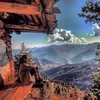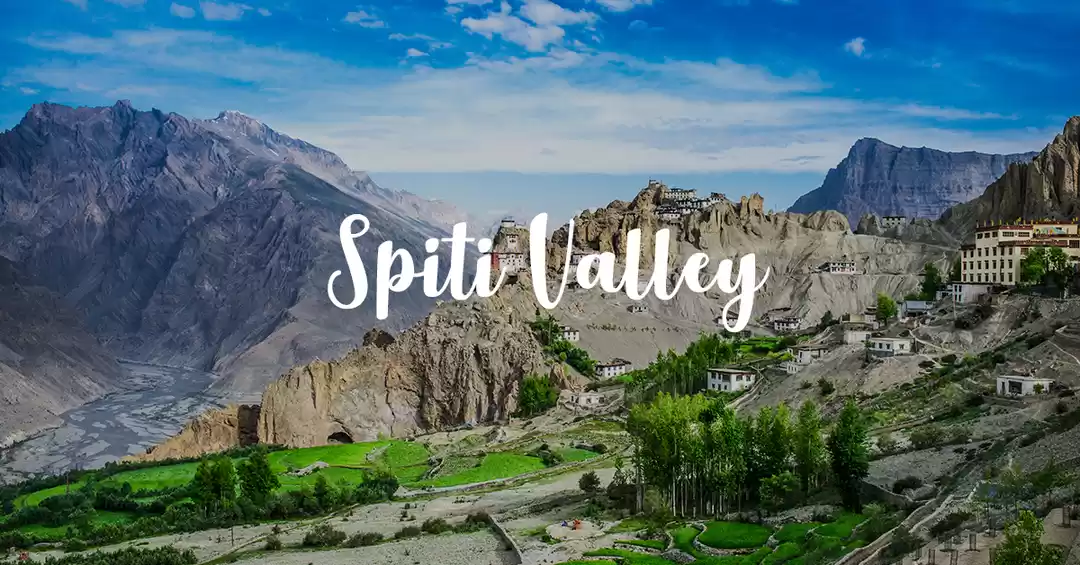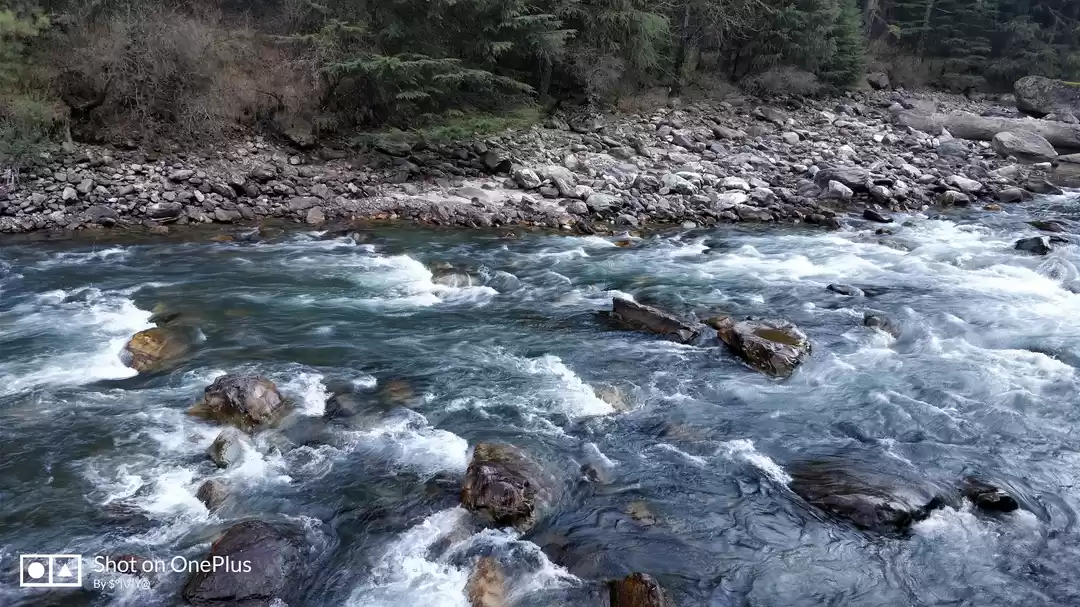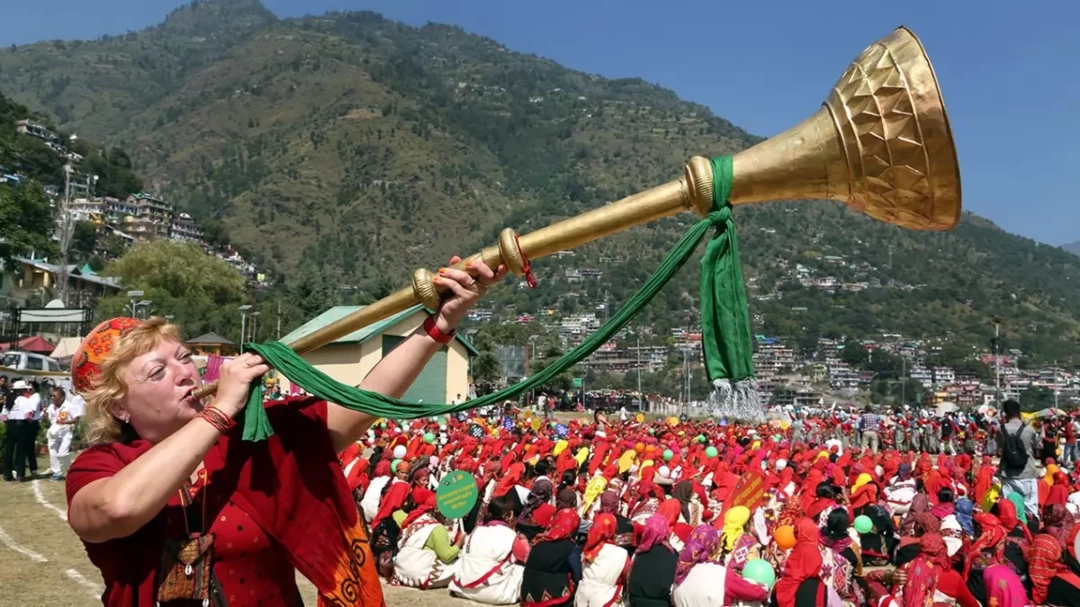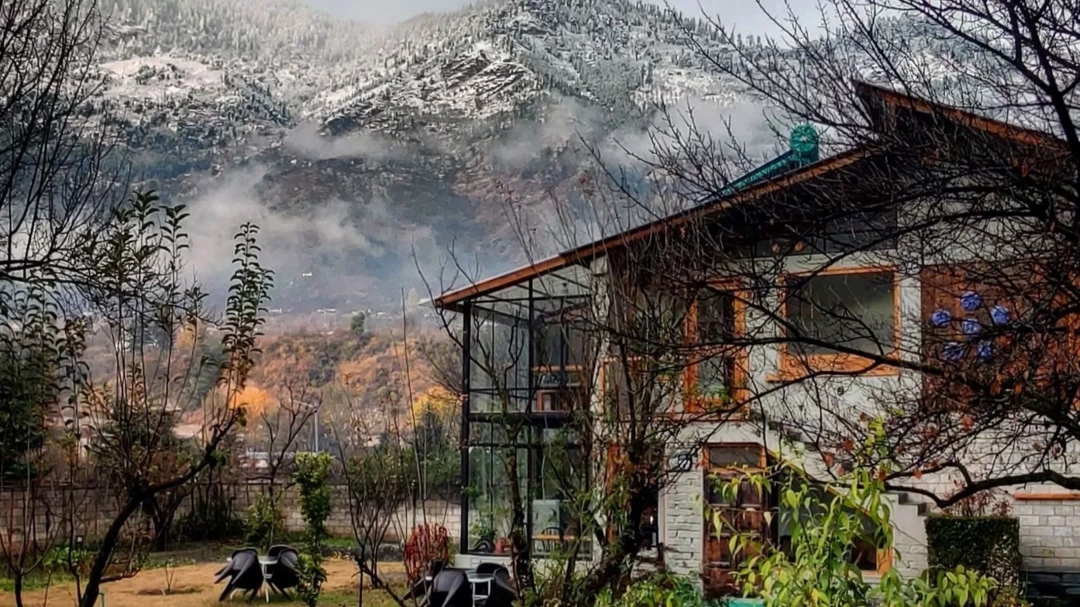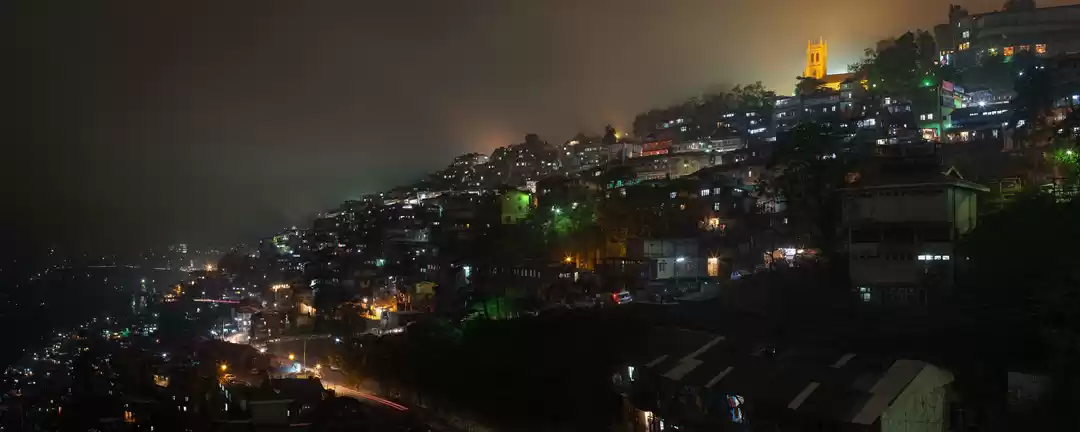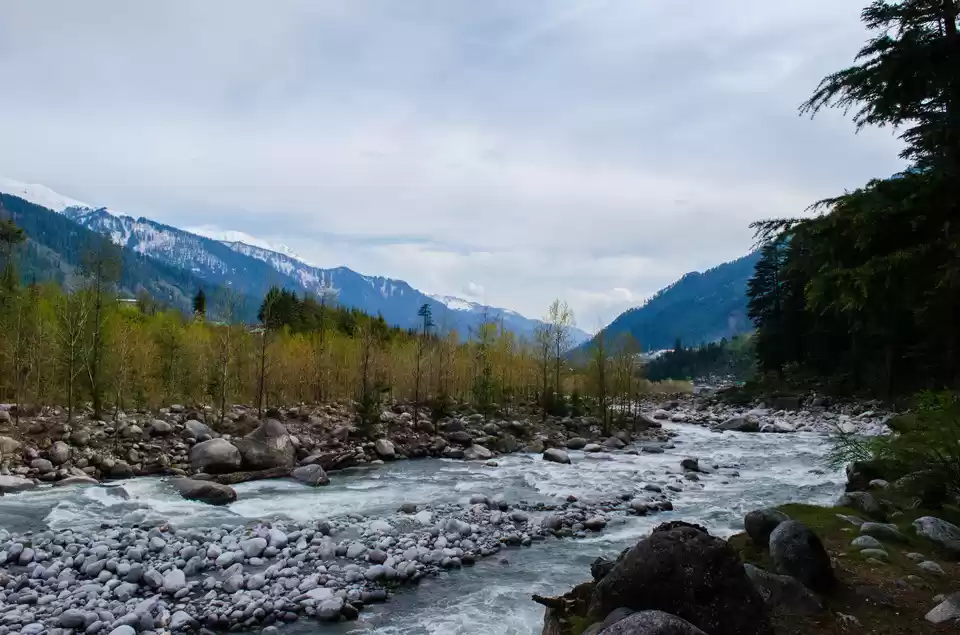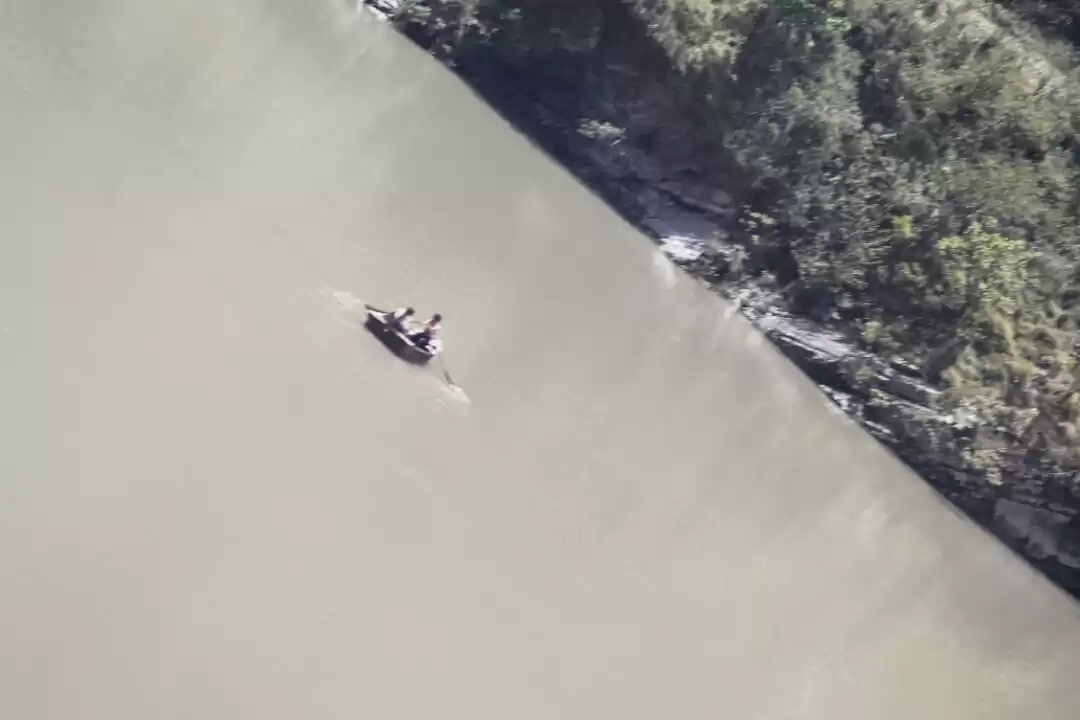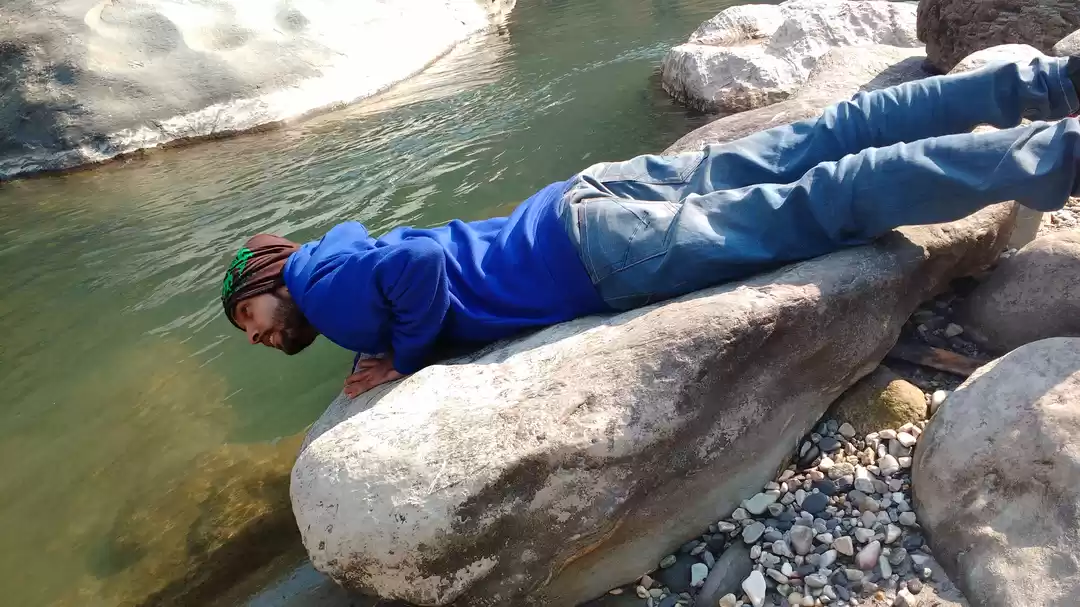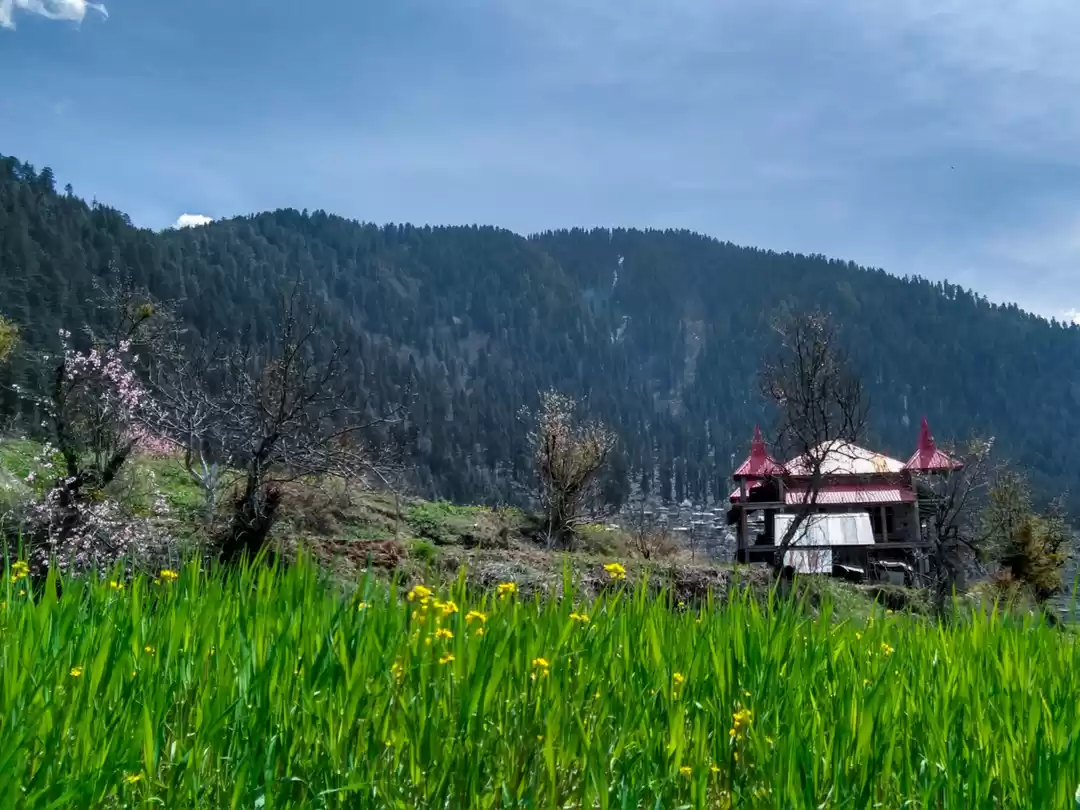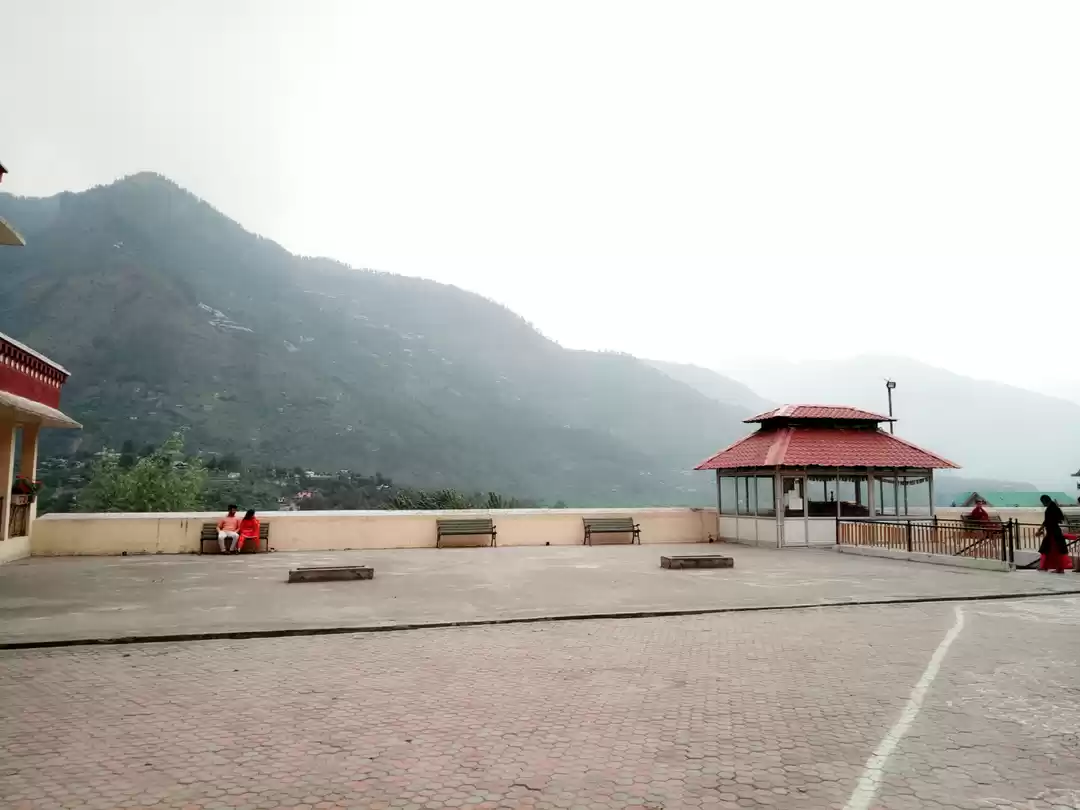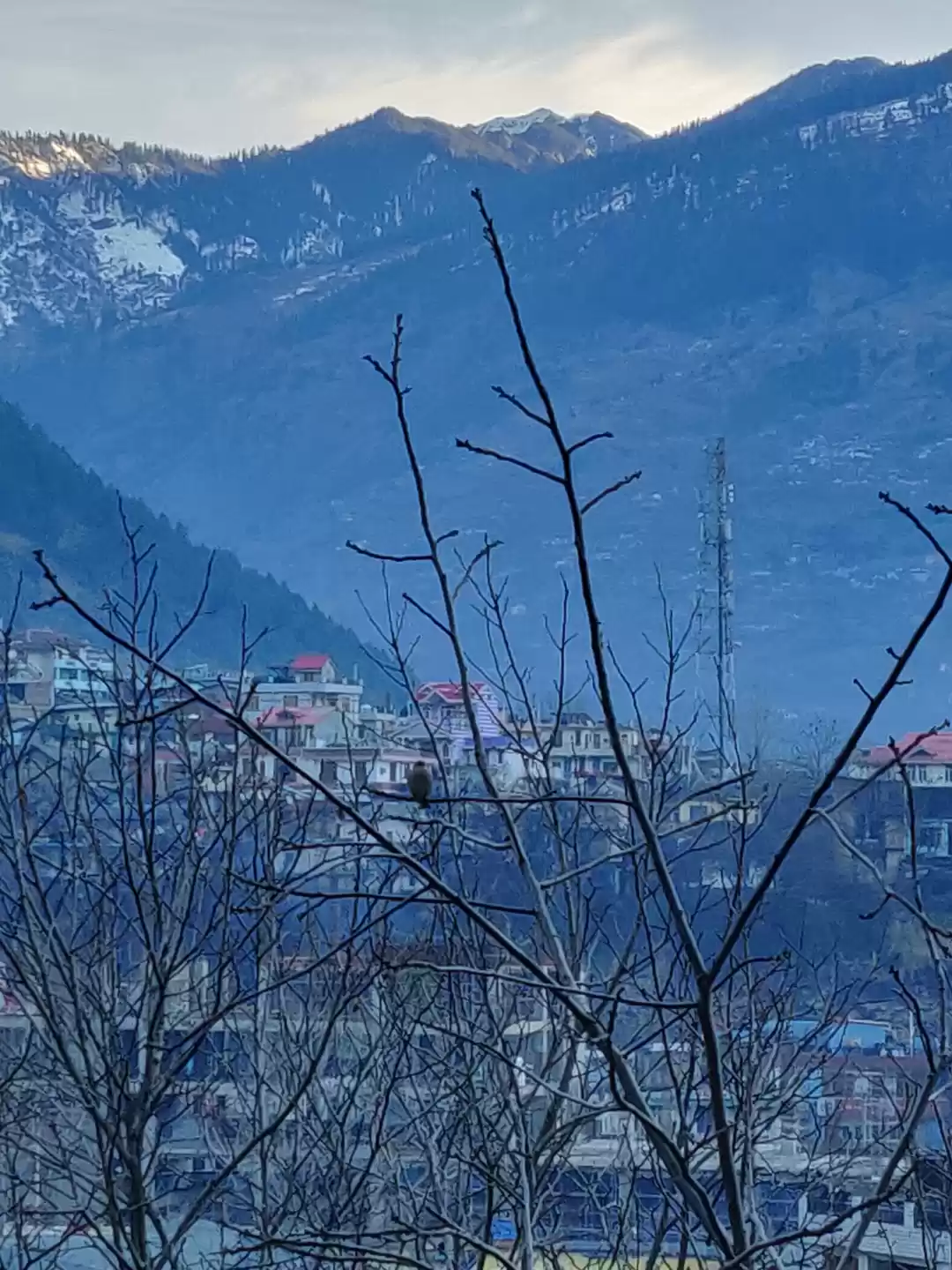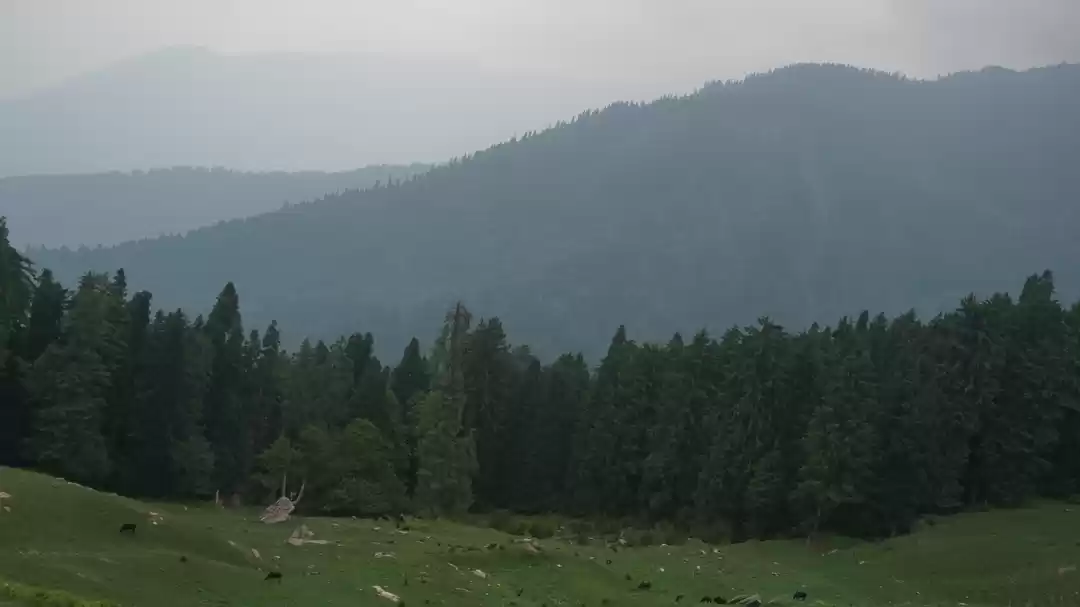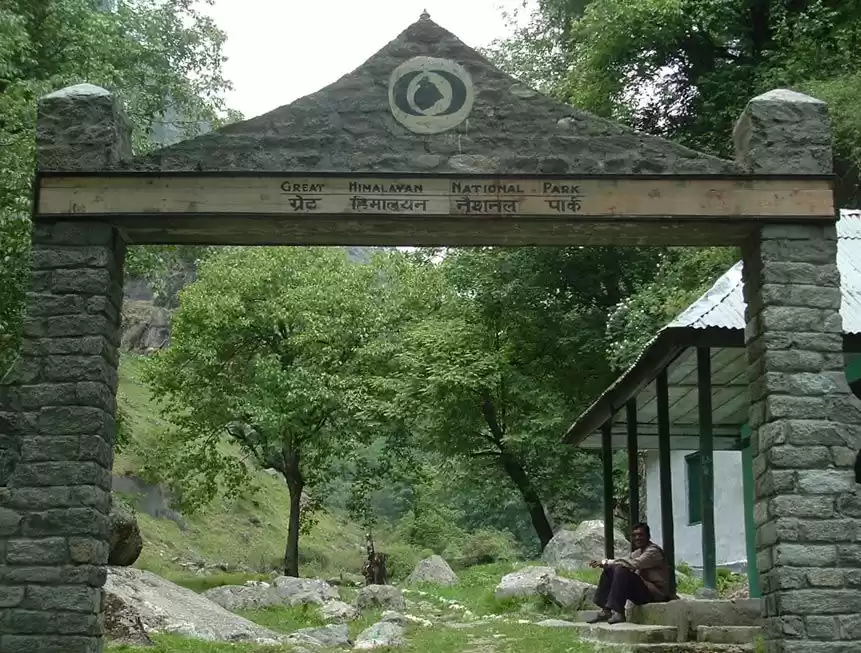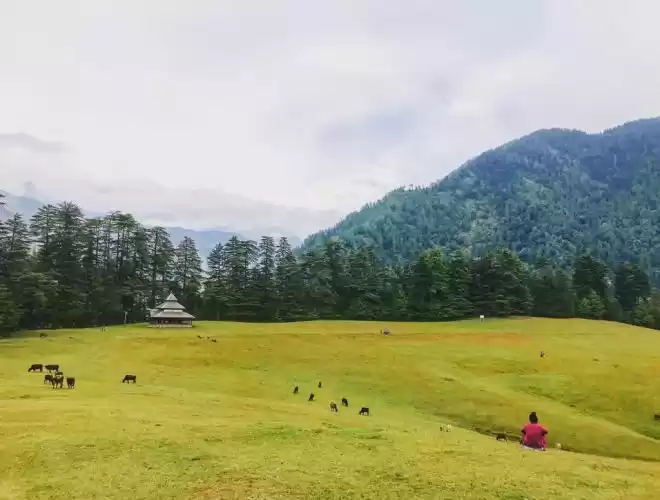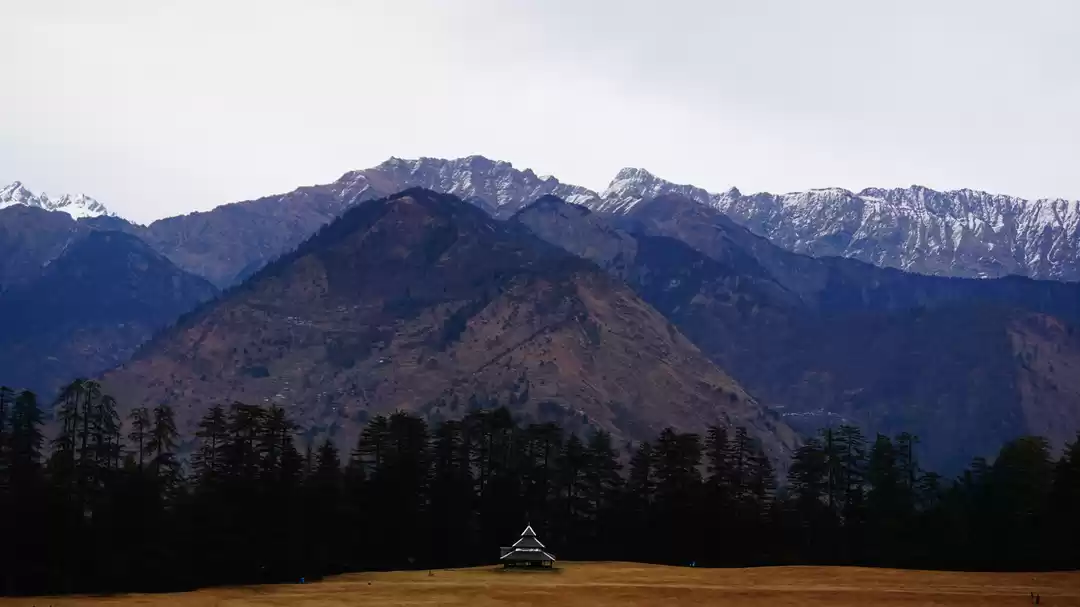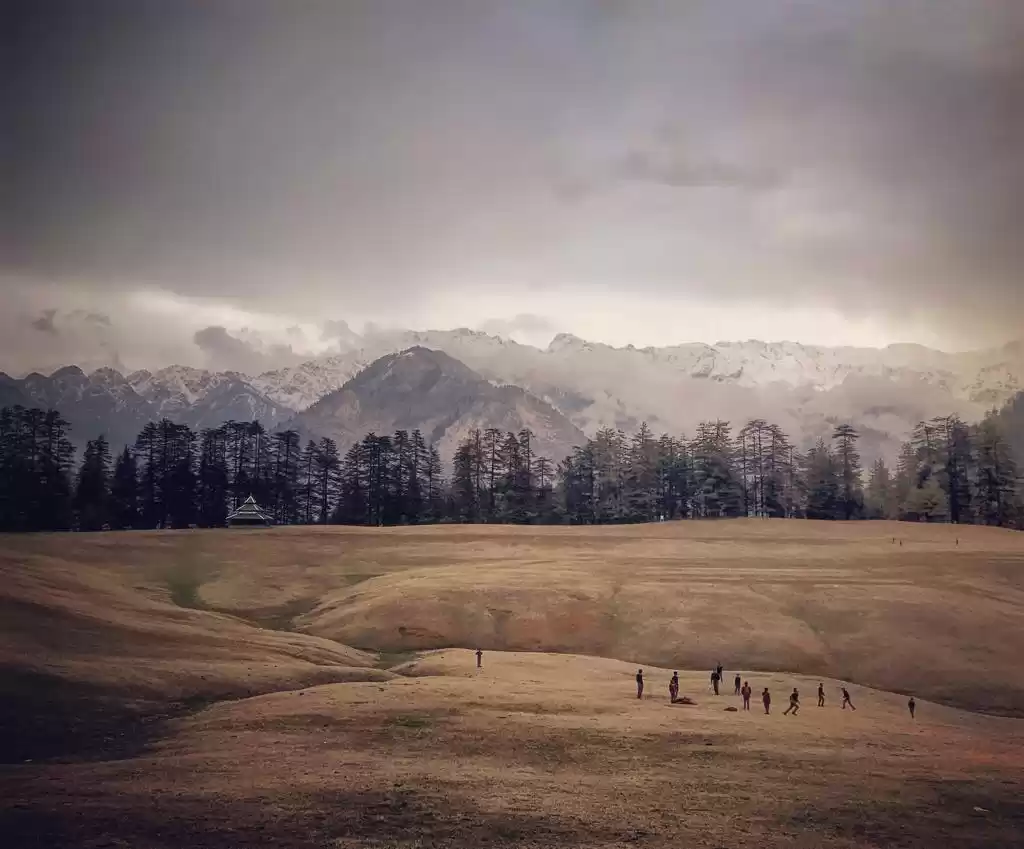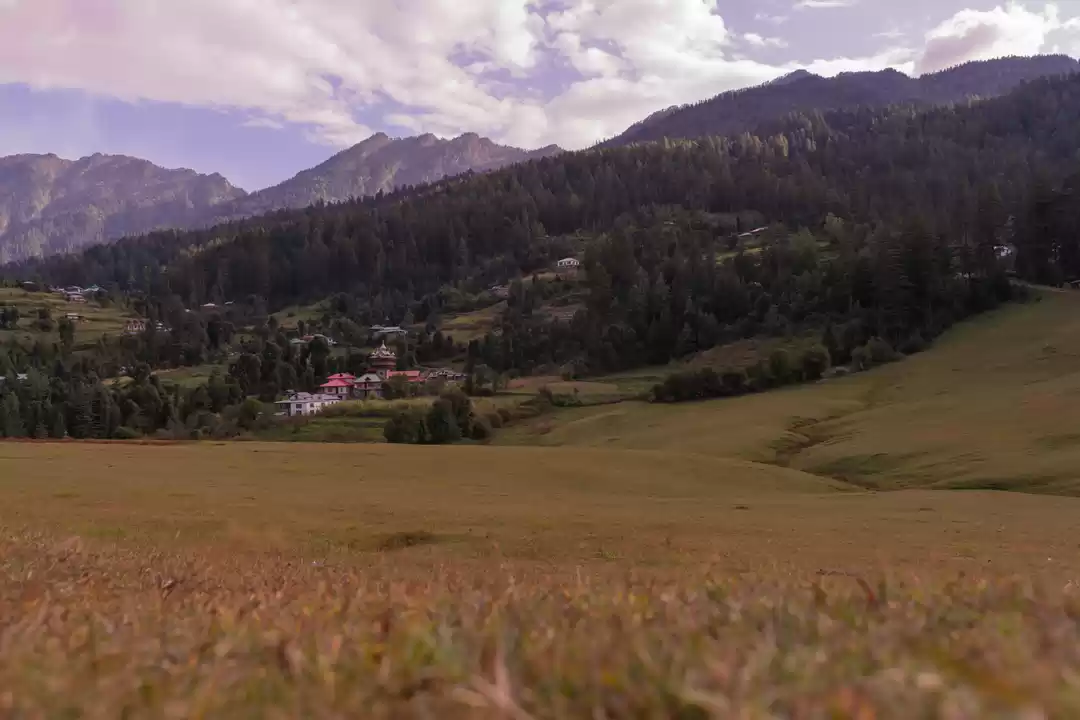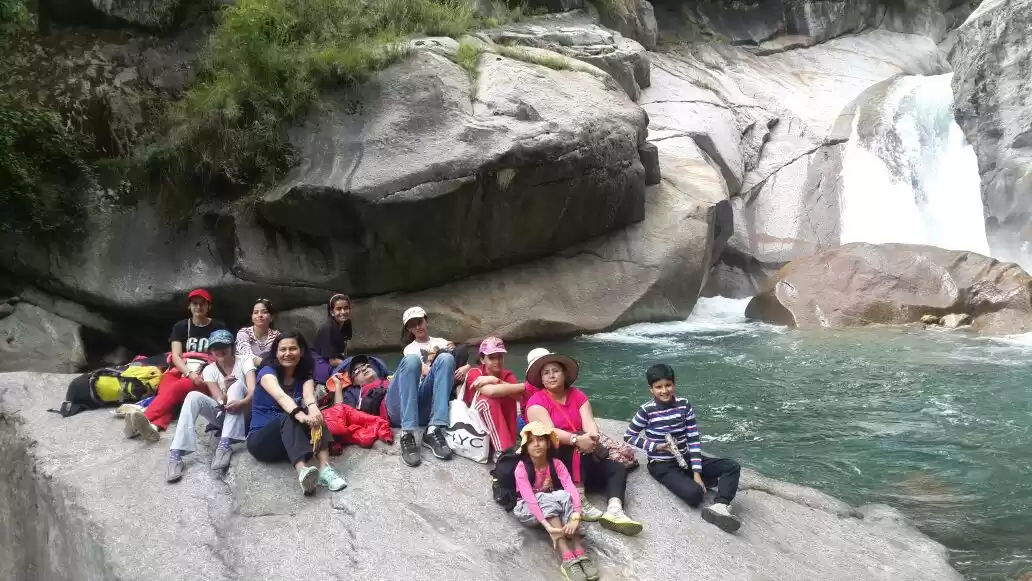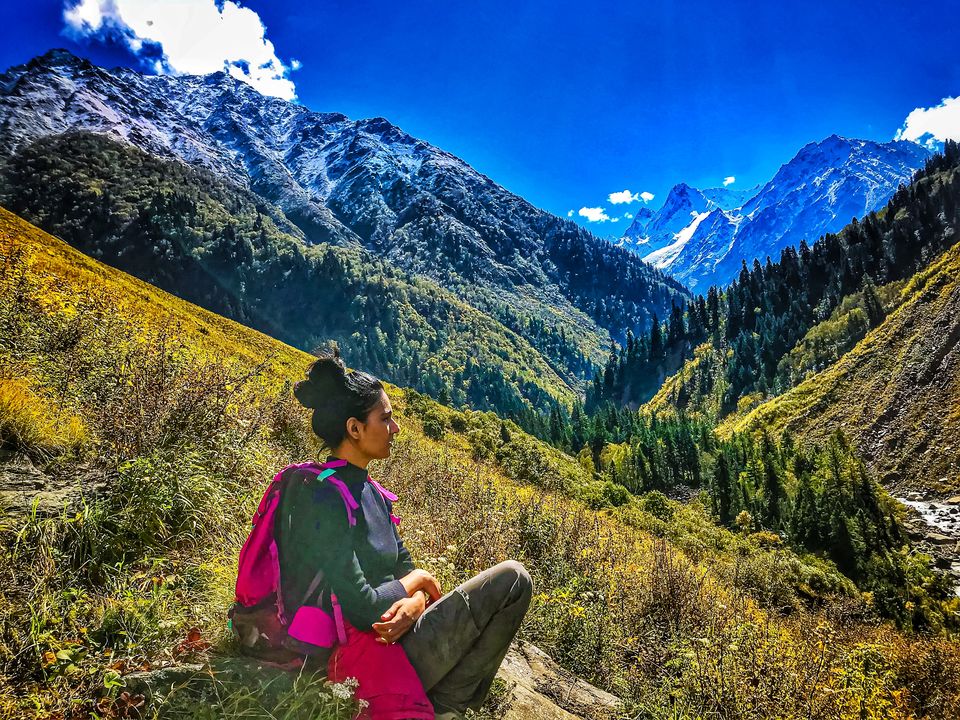
Ever desired to follow the river up to its mouth or origin? There’s this song that I’d often hum while hiking, by Lord Huron, that goes like this
‘Oh there’s a river that winds on forever, I wanna see where it leads
I took the lyrics a bit too seriously for I was so tempted to see the glacier that gave birth to the ever brimming Sainj River…I wanted to see Raktisar/Raktisaur! The villages of Shagwar, Shakti and Marore were the highlights of the trek for they're the only villages that boast of being a part of a national park. National parks usually never allow settlements inside.
Where Is The Great Himalayan National Park?
Shagwar took my breath away. A village with just 15 odd houses, running only on solar electricity. Snow clad mountains surrounded it while Sainj gushing down, brimming happily, was the only constant sound apart from the chirping of birds. I decided to sip on some water from the outside tap in the blue house.

In Fact when the park was in making, these three villages were given a separate space outside the boundary for habitations are never allowed inside national parks. But the belief in Devtas is so rigid that the villagers explained about their undying faith to the government and how the local deity would be displeased on displacing the sacred hamlet. Both Shakti and Marore have temples dedicated to Lord Brahma Rishi Guru Vashishth. Apart from that, villagers also worship the spiritual life of natural elements or objects. One gets to see open air temples of iron tridents ( trishul) and scrap metal of used household items with red prayer flags.
More about Murphy startling me at the most unexpected of places…in the next blog.
THINGS TO KNOW BEFORE YOU TRAVEL
TREKKING GUIDE
The trek was organised by HMRA ( Himalayan Monk Riders Association). The company is based out of Shangarh in Sainj Valley, Kullu and knows the area in and out. They carry out many other off beat treks in the region.
HMRA contact details : 9717110658
Day 5: Raktisar Camp to Jogini to Parkachi Thatch (Meadow)
DAY 6: Parkachi Thatch to Kharechar Thatch to Marore Village
DAY 7: Marore to Shakti to Shagwar to Niharani Village
The trek can be graded between Moderate to Difficult. Definitely needs tremendous amount of physical stamina. The trek after Parkachi Thatch is not for the faint-hearted. Details about that in the next blog.
PERMIT TO ENTER GHNP
Enterance to the park is by permit. There are two zones. Ecozone and core zone. The trek route lies in the core zone and in the heart of the park.
The permit for core zone can be obtained at the head office in Shamshi and the range offices in Sai Ropa in Tirthan Valley and Ropa in Sainj Valley.
Niharini boasts of being home to The Sainj Hydro Power Project barrage. It’s a tiny sleepy hamlet with Majaan village above,watching over it. It’s October time and the villages are in their splendid greens. We are already walking along Sainj. She’s brimming with joy, shining turquoise green, undisturbed by humans. This is her habitat, she thrives here like nowhere else, she’s born here, all pure in the wild, leaving for villages, farms and towns. She might have destinations a many, but her source is one and only Raktisar. I kept wondering how she’d get quieter , a tad more docile, as I’d hike further ahead, closing towards her birthplace.

While an old rustic house with muddy walls stood there all abandoned, a brand new cemented house with bright colored walls stood right beside it. Both though had contrasting structures and life span, made in different eras, but they witnessed no change. Time stood still in this village. Shakti was still cut off from the world. The nearest road head was 17 km away at Niharini. It’s 2020 and there’s still no sign of electricity or medical aid here. I asked a lady ‘ Light nahi hai aapke gaon mein?’ She stretched her hand pointing towards the moon in the sky ‘ woh hai hamaara light!” Lights here in this world, that’s insulated to outside influences, work on the mercy of Sun God. Getting by is not easy in monsoons and winters.

SOME STARTLING STORIES FROM SHAKTEE

TREK ITINERARY
DAY1 : Niharani Village (1710 amsl) to Gadaparni Village to Shagwar Village to finally Shakti Village (2270 amsl)
DAY 2: Shakti Village to Marore Village (2540 amsl and the last village inside the park) to Karechar Thatch ( 2830 amsl)
DAY 3: Karechar Thatch to Parkachi Thatch (3080 amsl) ..camped at Parkachi itself this day for it poured cats and dogs.
DAY4: Parkachi Thatch to Jogini Parkachi (3110 amsl) to Raktisar Camp (4000 amsl)
One is advised to take a guide along for the route after Marore gets tricky and is pure wilderness.
STAY OPTIONS
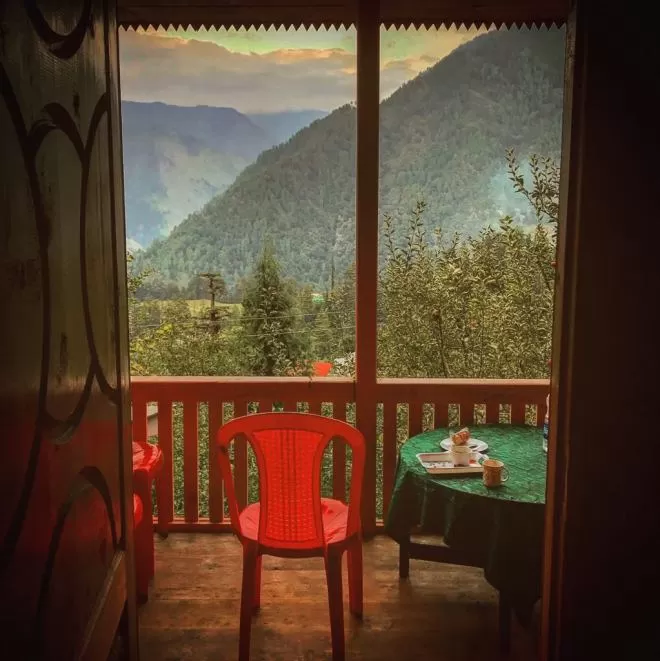
The Great Himalayan National Park is in the midst of the Western Himalayas. There are only trails to travel within the park. The remoteness of the area, low grazing pressure within forests, super low level of tourist activity and dependence on traditional lifestyles were the main reasons to establish the park in the given location. GHNP is also listed now as a part of the world heritage site.
Four rivers, Tirthan, Sainj, Jiwanal and Parvati originate in the park itself fed by the melting glaciers and monsoon rains. The marking of boundaries for GHNP was such that the entire 620 sq kms of Tirthan, Sainj, Jiwanal Valleys were without any human habitation except for the three villages of Shagwar, Shakti and Marore (with a total of justttt 120 odd people) all these three in Sainj Valley. And so I was lucky to have visited these special villages, which are still devoid of electricity and roads while hiking up to The Raktisaur Glacier.
It’s 9:00 am. The sky is packed up and there’s slight drizzle in the air but my spirits are on an all new high . No that’s not because i’m too strong or anything but because i’m too used to Himachal’s mood swings by now. I finally meet Sharad and we do a little bit of socializing while he’s driving his SUV. The plan was to drive up to Niharani, the last village from where the trek begins. There are three guys in the backseat and we pick up the fourth one named Rohit from Neuli. I say an awkward Hi to everyone. They’re all young local boys in their early twenties while I and Sharad are the oldies here 😛

My deep reverie was obstructed by Kishori and Rohit, contemplating whether they should climb the rock and fetch those massive white mushrooms. I’ve seen plenty in the Himalayan region so far, but never had I come across mushrooms as huge as these. The boys told me that these were locally called ‘Chechi’ and are quite edible.After crossing the bridge in Chenga, we were now hiking on the left bank of Sainj, nearing Jaangla. I sat with Rohit and Kishori waiting for Sharad and Biju. They talked among themselves in their heavy Himachali accent. Pointing at this particular tree branch tied up with saffron cloth, I asked Rohit what it meant. It’s locally called The Panchasara Devta Tree and is said to protect people in this jungle. He told me how the local people celebrate interdependence between nature and humans through sacred groves and traditional practices like digging of herbs in the meadows only after October time locally called Bees Bhadon.
A MOMENT OF SELF DOUBT
A steep climb up to Guguna top and one could now see the first out of the only three villages that were allowed inside the GHNP. Shagwar shone bright on the green steps of the mountains, basking in the faint rainbow. Another delight that remains constant in most of my Himachal trips.While the boys decided to roll a joint out of the freshly plucked leaves( how rich is this place :)) i decided to hike further ahead. Hiking alone at such places feels therapeutic.
The trails were pure wild. Endless mushrooms clothed laden woods, stupendous cascades, birds that I’d never heard before and the most vibrant butterflies that gave me company( the dogs ditched me this time for there were nowhere to be seen around). A little short of the village, while climbing up, in a dense jungle, I had a moment of self doubt. I was intimidated by a rather strange looking man, who hurried down towards me, running without brakes, staring at me incessantly as though he was drunk. I frantically dug my pockets for a Swiss knife and looked at my mobile..It had no network. The man suddenly stopped a few steps away from me, just standing and staring. I sternly asked him what he wanted, when he yelled at his cows from a distance. I realized he was slightly disoriented and breathed a sigh of relief. The sign of a blue house some meters away calmed me down. It’s then that I realized, solitude in places like these can be as intimidating as comforting at times.
A lady sat there with her daughter, shearing her lamb. This was the first time I saw a sheep without its coat. I cringed as the lamb resisted. When I asked the lady if it were hurting her, she laughed and said “ No! She just feels tickled” . My last two years of hiking in the mountains have changed my life in many ways, out of which one conscious change that I’ve made is to turn into a pure vegetarian. it was hard but having spent time with the shepherds, yak herders, horsemen etc in different Himalayan regions, I got to see the animals up close and found them as human as us. It feels strange to bring up a certain living being only to be slaughtered and served on your dish or skinned off to be flaunted on your dress or bags. I’ve got sloppy kisses from calves in Uttarakhand on being fed grass, just the way my pets would do and nudged by a lamb at Kareri for more scratching on his head. I often think about animal racism or Specism. A dog is treated like family and might even find a place in our bed. But a lamb with an equally warm heart and face only finds a place on our palate or plate! Strange are the ways of us humans.No?
After crossing a massive waterfall, a forest department office, few grasslands and quite a bit of walking, we finally landed at Shaktee. While Sharad and Biju were yet to reach, Rohit and Kishori sat down to fix the tents and light fire. I was finally at the village that I had read so much about. You know that feeling when you read about places and imagine how them in your head and then one day they come alive right in front of you! The village had three or four houses downhill while few sparkled on top. They sparkled with dim solar lights in the darkness that engulfed this quietest Himalayan alley. My head torch showed me the trail adorned with the weeping willows, leading me to the hamlet. I heard the kids yelling around, stealing the last few minutes of twilight before they were called back home by their mothers. While everyone had the same age or same species company, there was one kid who showed traits like me. She ran around with a dog, giggling away to glory,with a plastic sheet turned into a leash that she tried putting around the dog’s neck. The game was something like this..she was supposed to lock him up with the leash and run around while the dog was to escape the horror he was subjected to :P. I sipped on some water from the outside tap. This was probably the first hike where I wasn’t carrying my sipper at all. One didnt have to. The water here was the cleanest and there was plenty of it. Every bend and corner had some fresh water springs. The cherry on the cake was that it was icy cold.


What about their culture? I asked Rohit, later that evening, while staring at those dim lights on the mountain top that were put off by 7 pm. ‘ Since they are isolated for a long time, they exhibit a distinct culture. Devta or the local deity is given utmost importance and governs all the aspects of the life of the villagers.’

I sat around the bonfire with four Himachali men sharing stories from this alien world that forms a part of the country we all belong to yet is so distant and distinct that one feels you’ve entered a different planet. The village boasts of being home to the oldest voter in Himachal, a 108 year old lady named Shari, who recently passed away. Oh and BTW it also happens to be the farthest polling station in the state. Imagine the election official trekking almost 22 km through steep terrain amidst forests of the Himalayan National Park ( couldn’t they just hire me ;)

‘Shari’s house is 200 meters away from the polling station and she’s carried in a palanquin for voting.’ said Rohit.
‘Palanquin…really’? I scoffed! How do they manage that? ‘ So a chair is fitted between two huge wooden poles and the person is carried in that. While this is just 200 meters,patients and sometimes even pregnant women are carried this way for miles. In a recent incident, last month in February 2020, a pregnant woman was carried in one such makeshift cart for over 30 km , taking about 8 hours to reach the nearest hospital in Sainj Valley.’
I told the boys about the famous story of Hari Datt Sharma, popularly known as Shastriji, that I read in the GHNP book. In 1989, he was appointed as a teacher at Shakti village for 20 households of Shagwar Shakti and Marore but there was no school building at that time. Shakti was then 22 kms away from the road head. So Shastriji chose a cave that was half a km away from the Shakti temple and 200 m above the Sainj river. The first batch was of 13 children at this cave school. He continued to teach for the next 13 years till 2002. Shakti now has a school till 8th grade and kids from Marore and Shagwar village daily trek up to Shakti.


It felt strange to be in this alien world left far behind. Strangely happy. That probably because I was just a passerby. Camping in a hamlet which doesn’t know what a television looks like or hasn’t experienced the comforts of electricity sure feels incredibly unreal. Moreover a road inside the national park would mean easy accessibility, coming in of mobile towers and electric poles thus affecting the wildlife preserved so beautifully till date! But then again, wasn’t I being selfish? How about if i were to live here for good?This, in no way, was an easy thought. Yes the water is the cleanest, the air as pure as snow, there’s ample of weed that grows like wild grass and there is harmony among the meager few humans but somewhere in that beautiful simple life lies the urge to live with basic needs that you and I often take for granted. Imagine no sun for days together, battling those nasty winters in darkness.
And probably some secret force heard this conversation that i had with myself for just three days later, while hiking back from the glacier, a misadventure of sorts happened that made me realize how easily, what’s basic becomes a luxury, making one feel crippled and helpless.
The nearest homestays are available in Shangarh and Ropa. https://www.tripoto.com/himachal-pradesh/trips/shangarh-beckoning-yet-again-5e2410c3617cb Read this post of mine if you're looking for a budget friendly and a stunning place to stay at.
BUS ROUTE
Catch any bus going towards Kullu. You need to get down at Aut and catch a shared taxi or bus till Neuli or Ropa.
For more stories from offbeat locations , follow me on https://www.instagram.com/akankshasiwach/

